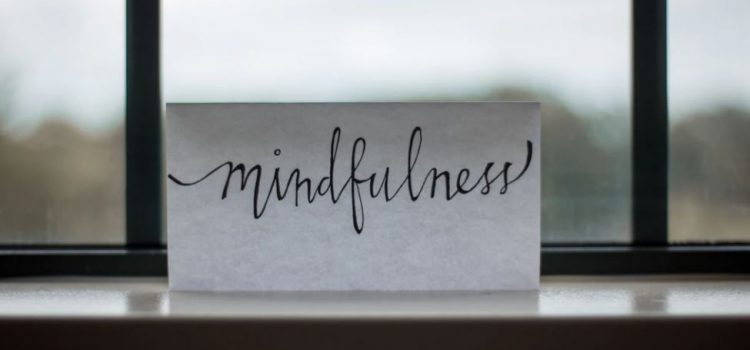

This article gives you a glimpse of what you can learn with Shortform. Shortform has the world’s best guides to 1000+ nonfiction books, plus other resources to help you accelerate your learning.
Want to learn faster and get smarter? Sign up for a free trial here .
It seems like everybody is talking about mindfulness these days, but what really is Mindfulness? Mindfulness is the practice of being fully present in the moment and aware of what you’re doing.
And, as it turns out, the benefits of mindfulness are both mental and physical. Not only does practicing mindfulness reduce anxiety, depression, and stress, but it’s also been shown to improve your sleep, boost immune functions, assist in weight loss, and lower blood pressure. Additionally, practicing mindfulness is also known to increase your focus at work and school and to improve relationships.
If one practice is known to do all of that, isn’t it worth trying? Here’s a list of simple mindfulness activities that you can incorporate into your daily routine—and the best part is, anyone can try them.
Meditation
The first mindfulness practice is meditation. The point of meditation is to purify your mind, get rid of “psychic irritants,” and bring you to a state of tranquility and awareness. However, meditation can be intimidating for newcomers. You may wonder, “How am I supposed to sit?” “What am I supposed to think about?” “How long is long enough?”
So here are the meditation basics as described in Mindfulness in Plain English:
TITLE: Mindfulness in Plain English
AUTHOR: Bhante Gunaratana
TIME: 18
READS: 34.2
IMG_URL: https://www.shortform.com/blog/wp-content/uploads/2020/01/mindfulness_cover.jpg
BOOK_SUMMARYURL: mindfulness-in-plain-english-summary-bhante-gunaratana
AMZN_ID: B003XF1LKW
How to Start Meditating
Determine how long you are going to meditate. Beginners can start at 10-20 minutes. But don’t worry about attaining any particular goal within a particular time period— this will just be distracting and counterproductive.
Sit in a comfortable pose. Do not change the position again until the time you determined at the beginning. Shifting positions will avoid giving you a deep level of concentration.
- Sit with your back straight. The spine should be erect, with the head in line with the spine. Be relaxed, not stiff. Have no muscular tension.
- Your clothing should be loose and soft. Don’t wear clothing so tight it restricts blood flow or nerve sensation. Take your shoes off.
- You can choose to sit on the floor or in a chair.
Sit motionlessly and close your eyes.
Your mind is like a cup of muddy water. Keep it still, and the mud will settle down and the water will be seen clearly.
The mind must focus on a mental object that is present at every moment. The book recommends starting with focusing on your breath.
Take 3 deep breaths. Then breathe normally and effortlessly, focusing your attention on the rims of your nostrils where the air is flowing through.
- Simply notice the feeling of breath going in and out. You may notice mindfully that there is a brief pause between inhaling and exhaling – but don’t obsess over this.
Keep focusing your attention on your breath.
Do not verbalize or conceptualize anything. Simply notice the incoming and outgoing breath, and notice as the breath lengthens as you relax.
When your mind wanders and gets distracted, bring it back. The book suggests counting in a variety of ways, basically to distract your mind back to breathing:
- Count 1 when inhaling, 2 when exhaling. Repeat to 10 then repeat.
- Count 1 to 10 quickly when inhaling, and again when exhaling.
- Once your mind is focused on the breath, give up counting.
When distracted, gently but firmly return to your focus. Do not get upset or judge yourself for straying. Do not force things out of your mind—this adds energy to the thoughts that will make them return stronger.
Over time, your breathing will become shallower and more subtle. This is an indicator of concentration.
- You will develop a new more subtle “sign”—which appears differently to different people (a star, a long string, a cobweb, the moon, a flower). Over time, master this so that whenever you want the sign, it should be available.
The mind must keep up with what is happening at every moment, so do not try to stop the mind at any one moment. This is momentary concentration.
When you feel in a state of concentration, the mind can then move to other sounds, memories, or emotions, one at a time. As they fade away, let your mind return to the breath.
How to Continue Meditating
Establish a formal practice schedule. Set aside a certain time.
- Meditating in the morning is a good start to the day. Wake up fully, then sit down to meditate. Don’t get hung up in the day’s activities.
- Evening before sleep is another good time. It clears your mind of mental rubbish throughout the day.
Once a day is enough when you begin.
Start with 20-30 minutes of sitting. Over time, you can lengthen this; some regular practitioners can sit for hours.
Some Questions to Consider While Meditating:
- Question the World Around You: Ponder Paradoxes: The first way to get your mind working in new ways is to contemplate questions and ideas that logic can’t answer. Buddhist monks call these questions koans, and they contemplate them as a way to stop relying on reason and logic in the journey toward enlightenment.
- Question the World You’ve Constructed: The Rules You Live By: The second way to get your mind working in a new way is to rethink the “rules” you’ve adopted in your life. These rules are called heuristics—we use them as back-of-the-mind guidelines to help us quickly make decisions and find solutions to problems. Often, we don’t question our rules because we believe they’re inherently true. A good way to cultivate mindfulness and “wake up” in your life is to occasionally examine the rules you’ve set for yourself.
Learning to Pause
Oftentimes, we simply react to problems as they arise. However, when we just react, we’re often responding from a place of negative emotion such as fear, anger, or frustration. Stopping for just a few seconds to observe and identify your current experience can help you respond to it with wisdom and clarity.
For example, if we’re about to eat a piece of chocolate, we should first take a moment to recognize the anticipation we feel, and perhaps the underlying guilt or judgment. We might then decide to eat it anyway—fully present and able to enjoy the experience—or we might put it back and go for a jog instead. The point of a pause is that we don’t know what will happen next; it leaves us open to the entire world of possibility.
Pausing might seem awkward or unfamiliar, but there are already many moments where we take the time to do so. In the shower, perhaps, or while driving to work, we often find that we’re not worried about anything in particular—our minds are free to wander. A pause might be the sigh of relief when you figure out a difficult problem, or the moment when you lie down in bed and let go of the day’s stress.
The philosopher Ajahn Buddhadasa calls these short pauses “temporary nirvana.” We briefly experience true peace and freedom when we stop chasing or resisting experiences. He writes that those pauses are necessary; without them we’d either die or go mad.
The famous pianist Arthur Rubenstein was quoted as saying that he didn’t handle the notes better than anyone else—his art lived in the pauses. Like in music, the silence of a pause creates a background that brings the foreground into sharp relief. It makes what comes after it more deliberate and more meaningful.
In short, the pause is the moment when we can see all of the branching paths forward. For example, if someone has insulted us, in that pause we can see the various ways we could respond. What would the result be if we fought back; would the person back down, or would it simply escalate? What if we simply let it go; would things go back to normal, or would the person take it as permission to continue? There may not be a single correct answer, but in the pause we can see our options and try to choose wisely.
Stillness and Calm
Brené Brown suggests a similar practice in her guideposts for living Wholeheartedly. Brown suggests practicing stillness and calm. According to Brown, practicing stillness means taking the time to be still and quiet. This might take the form of praying, meditating, or quietly reflecting. Practicing calmness involves stopping yourself from acting on strong, reactionary negative emotions such as anger or fear: for instance, stopping yourself from reacting to bad news by lashing out at the messenger. To stop yourself from being harmfully reactionary, Brown suggests taking a moment to breathe before you react to things. This gives you the time to think before you act and analyze whether acting on your emotions is the right approach.
Pausing before you react isn’t the only way to promote calmness. Daniel Goleman, the author of Emotional Intelligence, recommends challenging your anxious thoughts to promote calmness. For instance, if anxiety makes you think, “this situation is a disaster,” you might challenge the thought by asking, “Is this situation really that bad? Will I even remember it in a week, a month, or a year?”
Approaching a loved one and asking for a hug may also help you to keep calm. In The Body Keeps the Score, Bessel van der Kolk argues that physical touch such as hugging has a soothing effect, helping even victims of trauma to feel protected and calm.
For more on the art of pausing, read our summary of Tara Brach’s book Radical Acceptance and Brené Brown’s The Gifts of Imperfection.
Limiting Your Technology Use
Part of being mindful is being in the moment, and nothing takes out of the moment more than technology. Many of us are glued to our smartphones, tablets, and laptops, slavishly checking Facebook updates, refreshing email, and scanning Twitter. Although most people adopted these technologies for their benefit, they’ve become so tethered to them that they’ve lost control of how they spend their time and attention. People feel overpowered and exhausted by the multitude of digital tools at their fingertips, including devices like smartphones and tablets, websites, addictive apps, and social media platforms. Meanwhile, tech companies continue to invest major resources into making their products and services addictive so that you’ll continue scrolling and tapping. However, there are ways to escape the addiction.
Manage Your Devices
TITLE: Deep Work
AUTHOR: Cal Newport
TIME: 18
READS: 184.3
IMG_URL: https://www.shortform.com/blog/wp-content/uploads/2020/01/deepwork_cover.jpg
BOOK_SUMMARYURL: deep-work-summary-cal-newport
AMZN_ID: B00X47ZVXM
In his book Deep Work, Cal Newport says that social media is insidious in that it seems like you’re doing productive things when really the gains are minor. It’s also difficult to maintain mindfulness and live in the moment when social media is reminding you of all of the bad things happening around the world, selling you products you don’t need, and updating you on the activities of strangers. The overload of useless information can be overwhelming.
To begin managing the way you use tech, Newport suggests taking the following steps to examine each of your tech tools in regard to their benefits and cost. This will help you see which tools are worth your time and which aren’t.
- List your goals. Make a list of your most important goals—professional and personal—and then list the two or three activities that help you progress most toward these goals. Newport notes that these activities should be specific enough to give you direction, but general enough to be repeatable. Your goal-supporting activities can include social media. For example, Newport may claim that journalists and authors on social media are wasting their time, but these days, establishing a presence on social media is an essential part of marketing for authors trying to break into the industry.
- Examine your tech tools: For each of your major tools—for example, Facebook, Twitter, and Reddit—describe how they contribute (or don’t contribute) meaningfully to your important goals. To fully understand a tech tool’s effect on you and your goals, you must be honest with yourself about why you’re using the tool. Research shows that your intent in using social media determines how negatively or positively it will affect your well-being—those who use social media to check out what others are up to develop negative well-being due to constant comparison, while those who use social media to chat with their friends develop positive well-being due to strengthened social bonds.)
- Try quitting: If you’re on the fence about how much you need a tool, do an experiment: Quit for 30 days and see what happens. Afterward, consider whether your life would have been notably better if you had been able to use that tool.
Breaking out of the dopamine cycle of social media is easier said than done. There will be an adjustment period: Research shows that it takes about eight days for your brain to calm down and become accustomed to a lower level of stimulation.
Strategies for Reclaiming Your Time and Attention
Resisting the attention economy is a David-and-Goliath battle against tech companies’ efforts to keep your eyes glued to your screens. Here are some strategies to arm yourself for the fight in being more mindful with your technology use:
1) Delete your social media apps. These apps are designed to be more addictive than the web versions, so the best way to disarm the attention economy’s most potent weapon is to delete the apps from your smartphone. When tech companies shifted their services to mobile apps, their influence and advertising revenues skyrocketed. Since apps proved to be a major moneymaker, social media companies invested heavily in making them as addictive as possible. The swipe-down method of refreshing the newsfeed on Facebook’s mobile app was designed to increase user engagement because it plays into intermittent positive reinforcement. In addition to the addictive designs, social media apps are always with you when they’re on your smartphone, making it almost impossible to resist checking them when you have a few free moments while waiting in a lobby or standing in a checkout line.
The key to this advice is that you don’t have to stop using social media entirely—you just need to change the way you use them so that you have more control. Since you’ll have to log onto a computer to access those platforms, it will naturally limit how often you use them, and you’ll be more selective about when and why you log on. Many people who have tried this strategy changed the way they used social media: Instead of signing on frequently and scrolling aimlessly, they began using it briefly just a couple of times a week for specific uses. Other people stopped using social media, because the barrier of logging onto a computer for access outweighed the benefits. (Side note: If you decide to delete your social media accounts entirely, the process can be tricky. Read our summary of the Wired article, “How to Delete Your Facebook, Twitter, Instagram, and TikTok” for tips for navigating this process.)
2) Limit your smartphone’s capabilities. Block all distracting apps, websites, and functions on your digital devices, ideally by default or on a set schedule—for example, during work hours—and then unblock certain services when you need them. There are several digital tools that help you to create these blocks, such as Freedom and SelfControl. The goal is to turn your smartphone, tablet, or computer into a single-use device as much as possible.
When computers were first invented, it was the first time that a single machine could perform a wide variety of tasks, as opposed to something like a calculator that could do only calculations. Consumers valued the fact that computers allowed them to be more productive with just one piece of equipment. Over time, people began to use computers to perform multiple tasks all at once. However, switching back and forth among different apps and functions is less efficient than focusing on one task at a time—especially because those apps are designed to pull you into a time warp of distraction.
3) Use social media strategically. When it comes to being intentional about digital use, take a cue from social media professionals, such as marketing directors and social media strategists—they have to be smart about avoiding distractions, or they’d get nothing done. The best defense is a good offense. If you create a plan for using technology in a way that maximizes the benefits and minimizes the pitfalls, you’ll be better able to avoid distraction.
Consider the social media habits of one professional as examples of strategies you could use:
- Don’t rely on social media for entertainment—instead of sifting through Twitter to find articles and videos for entertainment, turn to sources like blogs and magazines that are dedicated to your interests.
- Use platforms like Instagram to follow a small number of accounts that reflect your interests, so that it’ll take you just a few minutes to browse updates.
- Avoid Instagram Stories, which add little value to Instagram posts but can eat up a lot of time.
- Keep your Facebook friend list as small as possible, limiting it to friends, family, and strategic exceptions.
- Create separate Twitter accounts for professional needs and personal interests, and follow only people who you feel are particularly knowledgeable and insightful.
4) Transition to “slow media.” The current digital landscape formed so quickly that most people adopted smartphones and social media apps without stopping to think about how to use these tools mindfully. However, it’s critical that people pause to consider their digital habits before diving even deeper into technological addiction. That’s the aim of the Slow Media movement, which encourages people to shift their media consumption to high-quality sources over convenient, low-quality media.
For example, let’s look at the slow media approach to news consumption. Many people get their news by checking social media and various news and aggregation sites throughout the day. One way to embrace slow media is to avoid breaking news, which is often redundant and sometimes incorrect. Instead, if you wait until the full article is published several hours later, you will get more accurate and complete information. In the same vein, make an effort to seek out opposing views on controversial stories. Additionally, limit your intake to only high-quality news by looking for stories by writers you respect. Finally, be intentional about how, when, and where you consume your news: You could start each day by reading the newspaper, and, whenever you come across longer pieces, set them aside for the weekend. Then, on Saturday morning, go to a coffee shop and read those articles without any distractions.
5) Get a “dumb” phone. Since smartphones are the most potent weapons in the attention economy, trading your smartphone for a cell phone that can only make calls and send texts is the most effective action you can take in resisting tech addiction and overuse. And, as tablets and laptops become lighter and more portable, getting rid of your smartphone is less radical than it seems. If you can’t completely ditch your smartphone because you need it for work or other logistical reasons, you could get a tethered dumb phone: When you want to have some time without your smartphone, activate your tethered phone to have texts and phone calls forwarded from your smartphone.
How to Use Mindfulness at Work
At this point, you may be thinking, “sure, I can try to practice mindfulness at home and on my days off, but how am I supposed to apply these practices to my work life?” After all, that’s where you spend most of your day. But don’t worry, we’ve got you covered there too.
In his book Indistractable, Nir Eyal discusses how to be more mindful in the workplace. Eyal suggests reducing your external triggers so you can be fully in the present and concentrate on the work in front of you. Here are Eyal’s tips for avoiding different types of distractions:
TITLE: Indistractable
AUTHOR: Nir Eyal
TIME: 52
READS: 213.5
IMG_URL: https://www.shortform.com/blog/wp-content/uploads/2021/05/indistractable-cover.png
BOOK_SUMMARYURL: indistractable-summary-nir-eyal
AMZN_ID: XYZ
1) Other people: Create an obvious visual cue that tells other people that you’re not available for interruption. This can take any form that makes sense to you, such as a sign on top of your computer monitor with the message, “I’m focusing right now, please come back later” or a designated hat or pair of headphones that signify deep focus time.
2) Email: Checking your email and responding to messages may feel productive, but it can take up hours of your day. To reduce your overall email time, you have to manage two factors:
- Time spent checking email: First, make your inbox less tempting by making it predictable—unsubscribe from unimportant newsletters and services. Second, reduce the number of emails you receive—you can do this by setting aside in-person office hours or setting your emails to delay your responses by a few hours, slowing down the response cycle.
- Time answering email: Each time you check your inbox, reply to urgent emails, tag semi-urgent emails “Today,” and tag non-urgent emails “This week.” Set a daily timebox for processing “Today” emails and a weekly timebox for processing “This week” emails.
3) Group chat: Set three boundaries around your group chat use so that it shows up in your workday as a tool for traction, rather than invading your workday as a distraction.
- Use it sparingly: Use group chat like any other real-time communication—schedule time to check messages and reply. Set an away message and turn it off at the end of your group chat timebox.
- Keep groups small: Restrict chat invitees to two or three people who are most relevant to the issue and can contribute meaningfully.
- Use it only for quick, unimportant matters: Discuss complicated and sensitive issues in person and leave your chat for simple confirmations or questions.
4) Meetings: Often, meetings are an excuse for someone to get others to think about a problem they have. They interrupt employees’ schedules, and when attendees are stuck in a boring and unproductive echo chamber of the same ideas around an issue, they’ll be triggered toward distracted behaviors. You can make meetings more meaningful in two ways:
- Require preparation: The meeting organizer must send out a short agenda that details the problem and their best suggestion for a solution. Prior to the meeting, attendees should use this information to brainstorm solutions. These two steps ensure that everyone will hit the ground running at the meeting.
- Ban devices: Ask attendees to take notes with pen and paper, and set up a charging station by the door where they can plug in their devices.
5) Smartphones: Your smartphone is probably one of the most distracting things in your life, but it can also be a useful tool for a variety of tasks. Maximize your phone’s use as a tool for traction by first rearranging your apps and then adjusting their settings.
- Rearrange your apps: First, delete any apps that don’t serve you. Second, think about apps that are useful to you, but distracting. You can often replace where you use these apps—for example, you might delete social media from your phone and use it exclusively on your computer. Last, rearrange your apps to remove clutter. Sort traction-supporting apps into a Goals folder and a Tools folder on your home screen, and move all other apps to the secondary screen.
- Adjust the settings: Think about which apps deserve to grab your attention in any situation. These apps—for example, your email and your messaging app—can keep their audio or visual notifications. Disable notifications for everything else.
6) Desktop: When you work against the background of a cluttered desktop, you encounter many visual reminders of questions to answer, tasks to complete, or ideas you wanted to research. These visual reminders of easy and interesting tasks can easily trigger you to escape from the discomfort of your work. Combat this by sorting everything into out-of-sight folders. This organizes your desktop so you can find what you’re looking for quickly and reduce your chances of being distracted by visual reminders.
7) Articles: When you come across an interesting article, you’ll often read it right away—at the expense of what you should be doing—or you’ll keep it open in a browser tab so you don’t lose it, which clutters your workspace with tempting visual reminders. Articles are knowledge-boosting tools when used the right way—rather than cutting them out, change how and when you spend time on them.
- Stop reading articles on your web browser. Eyal recommends the browser extension and app Pocket for this step. Pocket will pull an article’s content and save it to the app on your phone, so you can read during your article timebox instead.
8) Social media: One of the most addictive features of social media is the “news feed,” where you can scroll through endless pictures and posts. Without the news feed, social media becomes less addictive and more in your control. There are two methods you can use:
- Install browser extensions to control what you see: You can find extensions to block almost anything that you find is keeping you stuck on social media—including the news feed, recommended videos, and comments.
- Preload specific pages: Skip over the homepage—where the news feed lives—by navigating directly to the page you want to access. To do this, save specific frequently visited or important URLs to your bookmarks bar so you’ll go directly to the part of the site you want to be on. For example, instead of bookmarking Facebook.com, you might bookmark Facebook.com/messages or Facebook.com/[your business page]
Avoid Multitasking
Another reason you should try to be more focused on your present task at work is that each time you switch between tasks, you retain some mental residue from the previous task. It takes time for you to adjust to the new task because of this residue—it might be minutes before you get into the groove of the new task. Even worse is that if you’re switching between tasks every few minutes, you might have zero time in which you’re fully focused.
In an interview, Deep Work author Cal Newport stressed the importance of understanding that “task switching” isn’t all that different from multitasking. He says that most people try to do one thing at a time because they know they shouldn’t multitask—the problem, he says, is that most people don’t realize that they shouldn’t be frequently switching between “things” either.
How to Use Mindfulness in Relationships
Not only can practicing mindfulness improve your mental and physical health and your work life, but it can also improve your relationships with friends, family, and loved ones as well.
A lot of the pains and fears we carry are the results of our relationships with other people. Therefore, we can’t truly heal while isolating ourselves. Community is a powerful and necessary force, and having mindful relationships can help us to fully engage with it just as it helps us engage with our own inner lives.
When we have awareness and compassion in our relationships they can be powerful tools for spiritual growth and healing.
There are a few mindfulness activities we can practice when it comes to our relationships with others:
Empathetic Listening
When communicating with others, The 7 Habits of Highly Effective People author Stephen R. Covey urges you to try to understand their perspective before asking them to understand yours.
Covey points out that you can’t reach a mutually beneficial solution without first understanding the other person’s interests. This requires empathic listening, or striving to understand the other person’s perspectives by interpreting what they’re saying as well as how they feel.
Covey suggests you practice empathic listening with these exercises:
- People-watch to practice interpreting nonverbal cues. Observe an interaction from afar. What can you discern about people’s emotions based solely on their body language?
- Practice switching views. In a debate or negotiation, try to describe the situation from the other person’s perspective. Then, explain your point through their lens.
- As a friend or family member for feedback. Explain the concept of empathic listening, and ask them to tell you in a week how well you listened empathically to them.
Specific Strategies for Empathic Listening
Covey’s exercises allow you to practice empathic listening, but he doesn’t provide many specific strategies. Supplement Covey’s exercises with these practical strategies for empathic listening from the Crisis Prevention Center:
- Signal that you’re listening with your body language and gestures like nodding.
- Withhold your judgments. You don’t have to agree with the other person, but you must release your opinions long enough to understand the other person’s perspective.
- Paraphrase what you think the other person is saying, and ask them if you’re correct.
- Embrace silence. Sometimes your presence is enough to make the other person feel supported.
- Don’t cut the conversation short. Make sure the other person has expressed everything they wanted to say.
Be Present in Love
Another mindfulness activity is to learn to be present in your relationships. It’s one thing to be present with yourself, but a relationship brings another person (and her ego) into the dynamic and requires a lot of give and take.
Eckhart Tolle gave great advice for practicing mindfulness in relationships in his book The Power of Now.
TITLE: The Power of Now
AUTHOR: Eckhart Tolle
TIME: 28
READS: 30.1
IMG_URL: https://www.shortform.com/blog/wp-content/uploads/2019/08/powerofnow_cover.jpg
BOOK_SUMMARYURL: the-power-of-now-summary-eckhart-tolle
AMZN_ID: B002361MLA
Step 1: Acceptance
First, stop judging yourself. Accept yourself and the present.
Remember that love exists within you. You do not need your partner or your relationship to access true love, so you don’t need to cling to either. Accept her and accept the relationship as it unfolds naturally, knowing that your love and happiness don’t need to be tethered to every up and down you experience with your partner.
Second, stop judging your partner. Accept her fully, without the temptation to judge or change her in any way.
When your partner acts on her ego, do not judge or react; judgment means you are confusing her action with who she is, or that you are projecting your own ego onto her.
When you get into an argument or conflict with someone, observe your defensiveness when being attacked, as well as the aggression in your counterattack (if you do so). Notice your attachment to your views or opinions, your need to be right and prove the other person wrong. Recognize that your ego is fueling your reaction; acknowledging this will help to dissolve it. With practice, you will realize in future arguments that you have a choice not to react.
- It is impossible to have an argument with a present person, because she does not have an egoic attachment to her opinion and mental position, nor will she resist or react to the other person’s opinion. She can make her point without being defensive, reactive, or attacking the other person.
Acceptance of both yourself and your partner dissolves mind games, clinging, and the inclination to create a victim and perpetrator in the relationship.
- This will also cease codependency, which involves one partner getting caught in and enabling the other’s ego behaviors.
Step 2: Communication
Express your feelings to your partner without blame.
- First, try to express your feelings as soon as they come up, so that they don’t have time to fester.
- Second, you must be present and disconnected from your ego and pain-body. Acknowledge and observe your feelings from a position of not identifying with them; otherwise, you are more likely to be reactive and lash out at your partner.
- Be careful to avoid accusing, defending, or attacking.
Learn to listen to your partner openly and without getting defensive.
- Give your partner the space and respect to express herself freely.
Leave Bad Relationships
If you are dealing with an ego-controlled person who is manipulating you, walk away from the situation rather than allowing it to threaten your presence. Do not stay in situations that engage and inflame your egoic responses. It is your responsibility to have enough self-awareness to maintain your presence; blaming someone else for breaking your connection with your true self is, in itself, an act of the ego.
When you say “no” and remove yourself from a situation, do not do so in a way that is reactive and negative. Say “no” and choose to walk away from a place of calm and clear insight that the situation is not in your best interest.
Be Present With Friends
One reason that distraction happens so frequently in the time spent with your friends is social contagion—humans look to one another for social cues, so one person’s distraction easily spreads in a group.
- For example, if you’re having coffee with a group and one of your friends pulls out her phone, it will prompt everyone else to pull out their phones. Your group inevitably ends up sitting together in silence, scrolling social media instead of talking to each other. And, as we know from Cal Newport’s book Deep Work, the addictiveness of technology makes it hard to look away from our phones once we’re on them.
Not only does this tendency to fall into distraction together make it harder for you to maintain presence, but it also gets in the way of the conversations and shared moments that deepen relationships. The solution to this issue is consciously refusing distraction cues and sending social cues to your friends that distraction is not okay.
To make someone understand that their behavior isn’t appropriate, call them out on it. You don’t have to be rude in doing this, but you do have to be direct. An effective approach is to ask them directly about the behavior.
- For example, you’re having coffee with a few friends when one of them takes out her phone while you’re trying to talk to her. You can say, “Oh, sorry. I didn’t see you were on your phone. Is everything all right?”
When you pose this type of sincere, direct question about someone’s behavior, you give them two options:
- If there is something that needs to be dealt with, the question gives her the chance to explain and excuse herself to attend to it.
- If there isn’t any reason to be using her phone, the question reminds her how rude it is to be using her phone at that moment, prompting her to put it away.
Over time, these direct callouts will remind everyone in your social circle of the rudeness of distraction—prompting them to stop tolerating distraction and call others out.
Use Mindfulness in Your Daily Life
You don’t have to be a meditation guru or yogi to practice mindfulness activities every day. Our fast-paced world is focused on success, money, and the future and it can be difficult to find a time to take a pause, be in the moment, and enjoy working on a project or on the company of others. But by incorporating some of these mindfulness activities into your daily routine, you will be taking steps in the direction of a happier, healthier, more fulfilling life.

Want to fast-track your learning? With Shortform, you’ll gain insights you won't find anywhere else .
Here's what you’ll get when you sign up for Shortform :
- Complicated ideas explained in simple and concise ways
- Smart analysis that connects what you’re reading to other key concepts
- Writing with zero fluff because we know how important your time is






